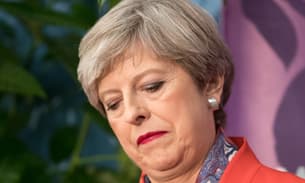
Explainer: what do the UK’s ID rules mean for voters?
People heading to polling stations on 4 July will have to show photo ID to be able to vote in the UK general election. Sounds straightforward enough but the rule has scuppered some would-be voters at the booths since it came in – including one former prime minister.
So, what does it mean for people hoping to have their say on who will be the next UK prime minister?
What are the rules?
The voter ID rules came into force in 2023 to apply to general elections, byelections and referendums in England, Scotland and Wales.
The government said of the rules: “The [Elections Act 2022] delivers on manifesto commitments to protect the integrity of democracy in the UK … This greater level of protection, which already exists in Northern Ireland, will ensure the electoral system remains secure, transparent and fair for generations to come.”
There are 22 accepted forms of ID, including a passport, driving licence and some travel passes. You can see the full list here. The rules around other kinds of election vary across the UK (Full Fact has a guide here).
Isn’t this a good thing?
Not everyone thinks so. The changes led to about 14,000 people being turned away from polling booths at last year’s local elections for not having the correct documents. The number deterred from trying to vote is likely to be much higher, with campaigners warning that some marginalised groups are more affected than others.
The Electoral Reform Society, a membership organisation that works in democratic rights, has claimed that requiring photo ID makes it harder for people to vote.
And the scheme will take from the public purse. The government estimates it could cost taxpayers between £65m and £180m a decade.
But surely 22 forms of ID is enough?
Well, the cross-party levelling up, housing and communities committee doesn’t think so. In March it released a report saying: “We disagree with the government’s view of the adequacy of the list of accepted photo ID and believe that it should be widened to include other forms, such as police warrant cards, emergency services passes and non-London travel passes.”
Clive Betts, chair of the committee, said: “Our voter registration system is creaking. Recent changes such as voter ID have been tacked onto a Victorian-era system which is failing voters, political parties and election officials.”
Who’s most affected by the rule?
Research by the charities Stonewall and the LGBT Foundation found that LGBTQ+ people are three times more likely than the general population to not have a usable photo ID, with 96% of trans and non-binary respondents encountering at least one barrier to accessing it.
Previous reporting for TBIJ showed that a quarter of 200 trans and non-binary people surveyed were less likely to vote due to the changes in ID rules.
The need for ID compounds the pre-existing problem that certain groups – already including young people, renters, ethnic minorities and people in lower socioeconomic groups – are less likely to be registered to vote.
What if I don’t have an ID?
If you don’t have an ID or don’t want to use your ID, you can apply for a voter authority certificate. If you want a voter ID for the general election, you need to apply by 26 June.
I’ve got ID but it’s out of date
Don’t worry, this will be usable as long as you still look like you. But the name on the document must match the one that you’re registered to vote with.
I’m famous, won’t my face be enough?
Sorry, sweetie, no exceptions made. Even when Boris Johnson reportedly forgot his ID and tried to vote, he was turned away (Don’t you know who I am? Um, yes, the person who introduced these rules in the first place …).
Reporter: Chrissie Giles
Editor: Franz Wild
Production editor: Emily Goddard
Fact checker: Alex Hess




